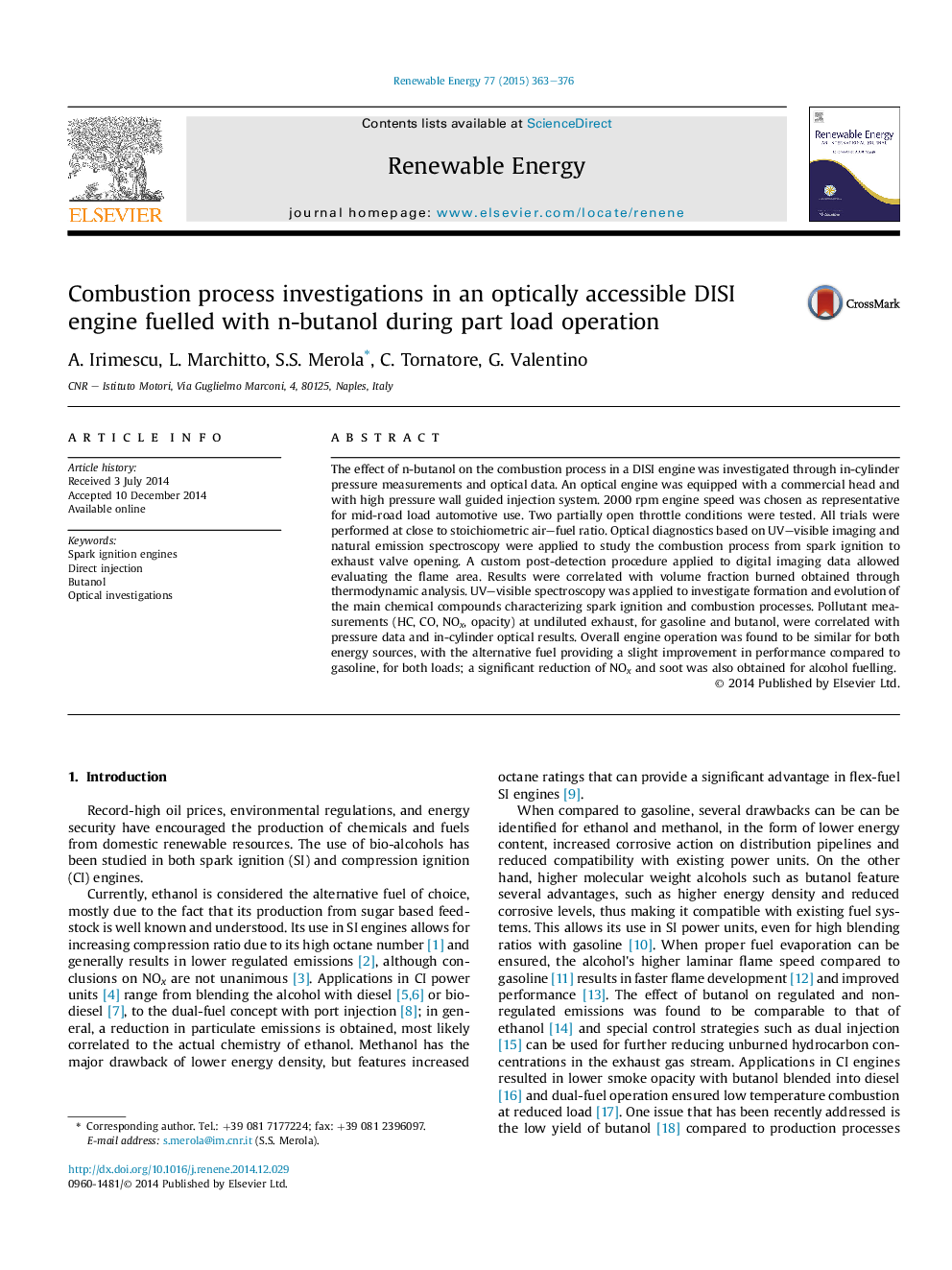| Article ID | Journal | Published Year | Pages | File Type |
|---|---|---|---|---|
| 6767523 | Renewable Energy | 2015 | 14 Pages |
Abstract
The effect of n-butanol on the combustion process in a DISI engine was investigated through in-cylinder pressure measurements and optical data. An optical engine was equipped with a commercial head and with high pressure wall guided injection system. 2000Â rpm engine speed was chosen as representative for mid-road load automotive use. Two partially open throttle conditions were tested. All trials were performed at close to stoichiometric air-fuel ratio. Optical diagnostics based on UV-visible imaging and natural emission spectroscopy were applied to study the combustion process from spark ignition to exhaust valve opening. A custom post-detection procedure applied to digital imaging data allowed evaluating the flame area. Results were correlated with volume fraction burned obtained through thermodynamic analysis. UV-visible spectroscopy was applied to investigate formation and evolution of the main chemical compounds characterizing spark ignition and combustion processes. Pollutant measurements (HC, CO, NOx, opacity) at undiluted exhaust, for gasoline and butanol, were correlated with pressure data and in-cylinder optical results. Overall engine operation was found to be similar for both energy sources, with the alternative fuel providing a slight improvement in performance compared to gasoline, for both loads; a significant reduction of NOx and soot was also obtained for alcohol fuelling.
Related Topics
Physical Sciences and Engineering
Energy
Renewable Energy, Sustainability and the Environment
Authors
A. Irimescu, L. Marchitto, S.S. Merola, C. Tornatore, G. Valentino,
